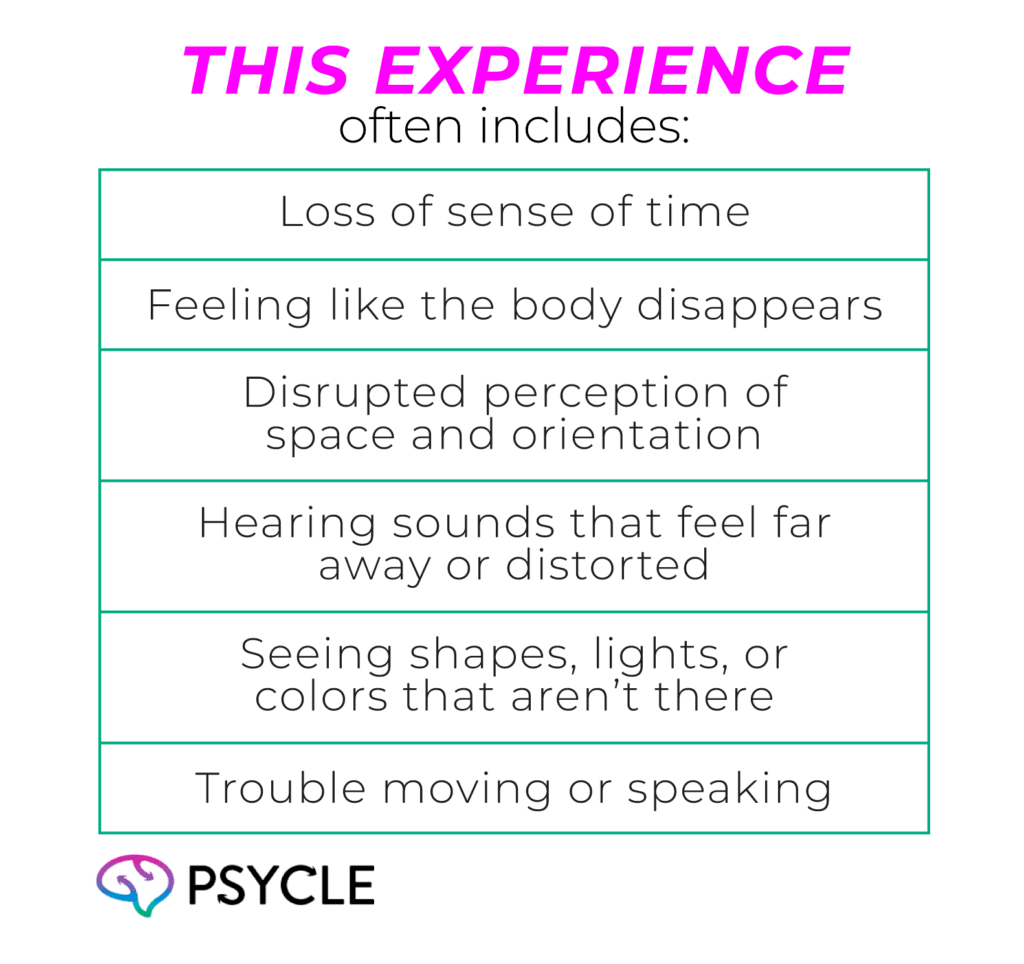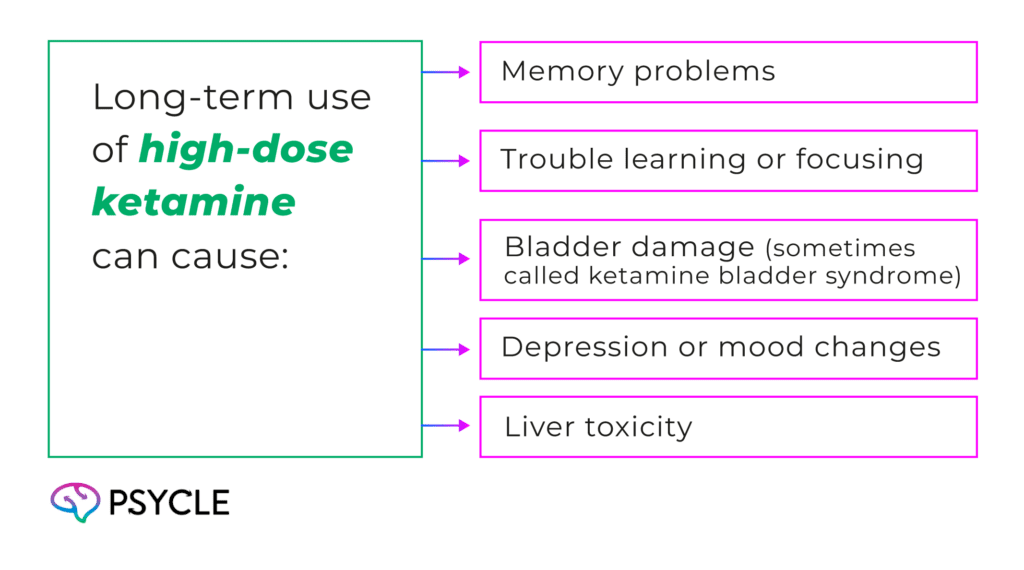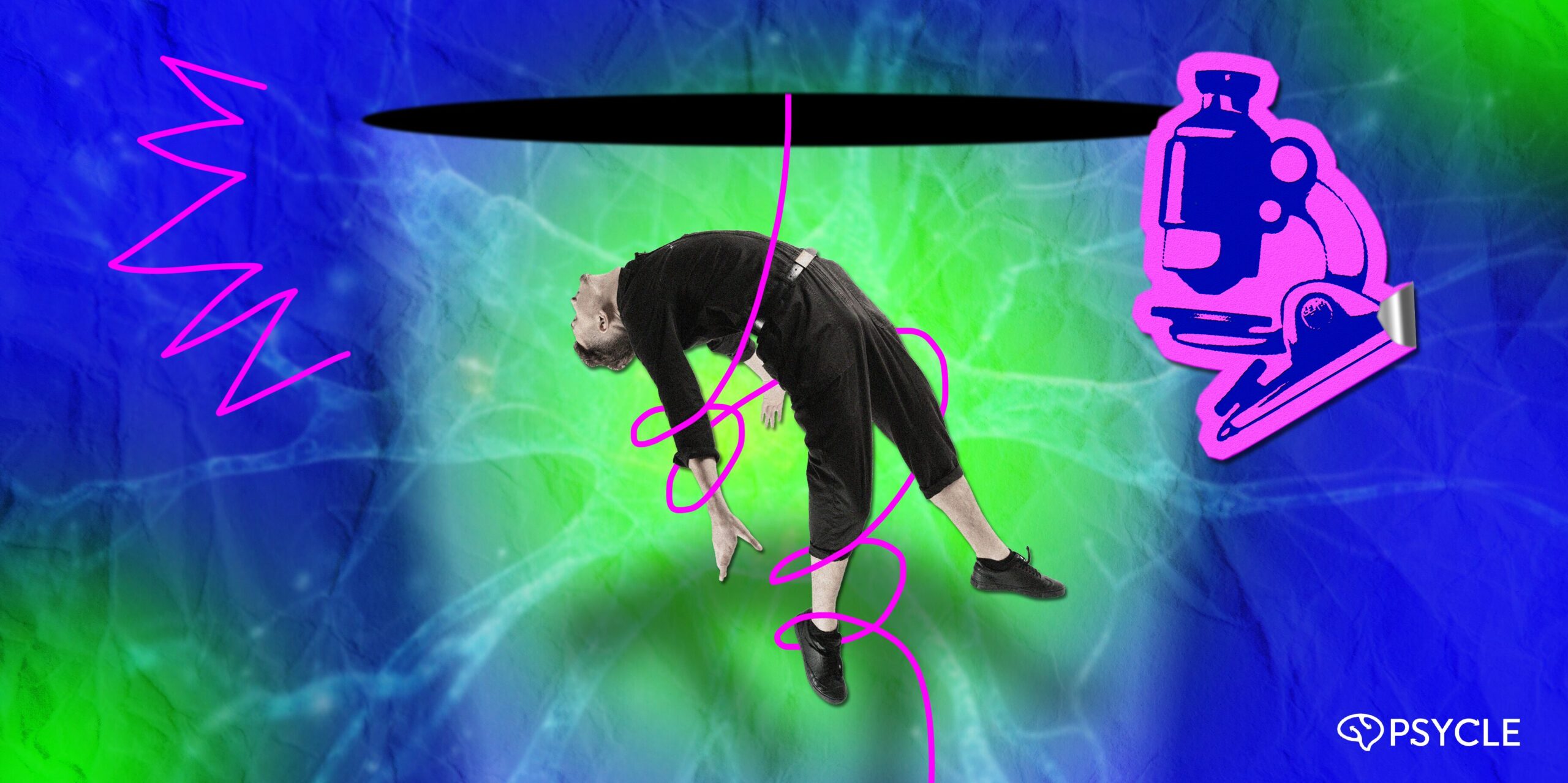A K-hole is a profound, dream-like state that comes from high doses of ketamine. This article explains how the K-hole happens, what it feels like, and the risks involved.
Key Takeaways
- A K-hole is a deep state of dissociation caused by high doses of ketamine.
- Ketamine works by blocking NMDA receptors, which changes how brain cells communicate.
- It disrupts brain synchronicity, making it hard to stay aware of your body and surroundings.
- The dose of ketamine changes its effect. Clinics use small doses to treat depression, while recreational users may take more and enter a K-hole.
- The K-hole isn’t deadly on its own, but it can lead to dangerous behavior, psychological distress, or long-term health problems.
What is a K-Hole?
A K-hole is a state of intense dissociation, where you feel separated from your body and surroundings. People describe the K-hole as feeling like they’re floating, watching themselves from outside their body, or moving through a tunnel or alternate reality.
This experience often includes:

A person in a K-hole may appear still and silent, even though they are fully awake. On the outside, they may look like they are sleeping or frozen, but on the inside, they may be having a profound cosmic experience.
Not everyone finds the K-hole pleasant. Some people may feel scared or confused and go into a state of panic. In contrast, some people find the experience peaceful and euphoric. Those interested in altered states of consciousness may seek out K-holes to explore the boundaries of their mind and reality.
People usually experience the K-hole when they take very high doses of ketamine, often through snorting or injecting it. This dose is much higher than what doctors use in clinics, and K-holes are primarily associated with recreational ketamine use.
How Ketamine Affects NMDA Receptors in the Brain
Ketamine works by targeting proteins in the brain called NMDA receptors. These receptors normally help transmit signals by interacting with a chemical messenger called glutamate. When ketamine blocks NMDA receptors, it disrupts glutamate signaling, altering the brain’s usual patterns of communication.
While on ketamine, some parts of the brain become more activated, whereas others slow down. This imbalance helps explain why people in a K-hole have a different experience of reality from usual. Since glutamate also plays a key role in processing sensory information, people may see, feel, and hear things differently.
Ketamine and Brain Synchronicity
In a normal waking state, certain parts of the brain work together in tightly organized networks. Regions within networks fire in synchrony, meaning they send electrical signals together in coordinated patterns.
Ketamine—and other psychedelics like LSD and magic mushrooms—disrupt the brain’s usual patterns of synchrony. Brain regions that don’t normally communicate begin to interact more freely, leading to more chaotic and flexible patterns of brain activity.
This change in connectivity is believed to explain why people have altered perceptions under the influence of these drugs. What we usually perceive as reality becomes more “loose,” and experiences are out-of-the-ordinary.
During these states, people can also have profound thoughts or realisations. For this reason, psychedelic experiences, including those induced by ketamine, can be deeply therapeutic. However, it’s essential to have these experiences in guided settings to ensure that you’re safe and psychologically supported.
Why Ketamine Dose Matters
The dose of ketamine has a significant impact on how it affects the brain.
- Low doses (usually given in clinics) are used to help treat depression, anxiety, or pain. These doses are often delivered through an IV or as a nasal spray, in the form of Spravato. Patients stay awake, alert, and aware of their environment. The effects last for about 40 minutes to an hour and are closely monitored.
- Medium doses may cause mild dissociation. This means you may feel “floaty,” disconnected, or like your thoughts are moving slower than usual. This higher dose may be used in recreational settings or wellness clinics that focus on ketamine’s more psychedelic effects.
- High doses lead to full dissociation and the K-hole experience. This is more likely to happen during recreational use. At this level, the brain’s normal communication systems shut down, leading to the dream-like, out-of-body effects of the K-hole.
A 2023 study from the Picower Institute at MIT explains how ketamine’s effects depend on dose and timing. At smaller doses, ketamine increased gamma waves in the brain, which are associated with wakefulness and processing. However, at higher doses, ketamine increased delta waves, which are related to deep sleep and unconsciousness.
Are K-Holes Dangerous?
The K-hole itself is not deadly, but it can put you in a dangerous situation.
When you’re in a K-hole:
- You can’t move well
- You may not respond to people
- You can’t tell what’s happening around you
- You may fall or hurt yourself
- You may panic or make unsafe choices
Because of this, entering a K-hole without help nearby can lead to accidents. You might fall, choke, or get into a risky situation without knowing it.
Some people also find the K-hole scary. If you’re in an unfamiliar place or with people you don’t trust, the experience can feel worse. That kind of distress can have a long-lasting impact, and you may feel ungrounded or dysregulated well after the experience is over. If this happens, you may choose to seek support from a specialized psychedelic integration therapist.
Risk of Addiction
For those who find the K-hole pleasant and actively seek it out, it’s essential to be wary of ketamine’s addictive properties. Ketamine affects the reward system in the brain, which can lead to craving and psychological dependence.

Ketamine Drug Interactions
High doses of ketamine mixed with other drugs can be extremely dangerous. Using ketamine at the same time as other depressant drugs such as alcohol, opioids, or benzodiazepines, can slow the central nervous system down. This can result in memory loss, slowed breathing, decreased heart function, and, in severe cases, coma.
FAQs
Why Do People Report Out-of-body or Near-death Experiences During a K-hole?
A K-hole can induce powerful dissociative effects, which often include the sensation of leaving one’s body or experiencing a kind of “death” of the self. This happens because ketamine disrupts communication between key brain networks, especially the default mode network (DMN) — a system involved in self-awareness and the sense of identity.
How is a K-hole Different From a Psychedelic Trip on LSD or Psilocybin?
A K-hole, caused by ketamine, is mainly a dissociative experience where people feel detached from their bodies and reality. It’s like drifting away or entering a dreamlike, out-of-body state. In contrast, LSD and psilocybin produce classic psychedelic trips that heighten sensory perception and often bring vivid visuals and deep emotional insights. While ketamine disconnects you from yourself and the world, classic psychedelics tend to expand your awareness and connection to your surroundings.
Sources
- https://www.sciencedirect.com/science/article/abs/pii/S0376871608000550
- https://pmc.ncbi.nlm.nih.gov/articles/PMC11521905/
- https://www.pnas.org/doi/10.1073/pnas.2402732121

